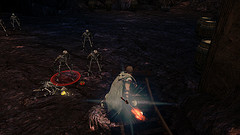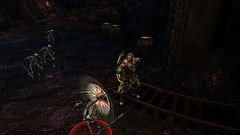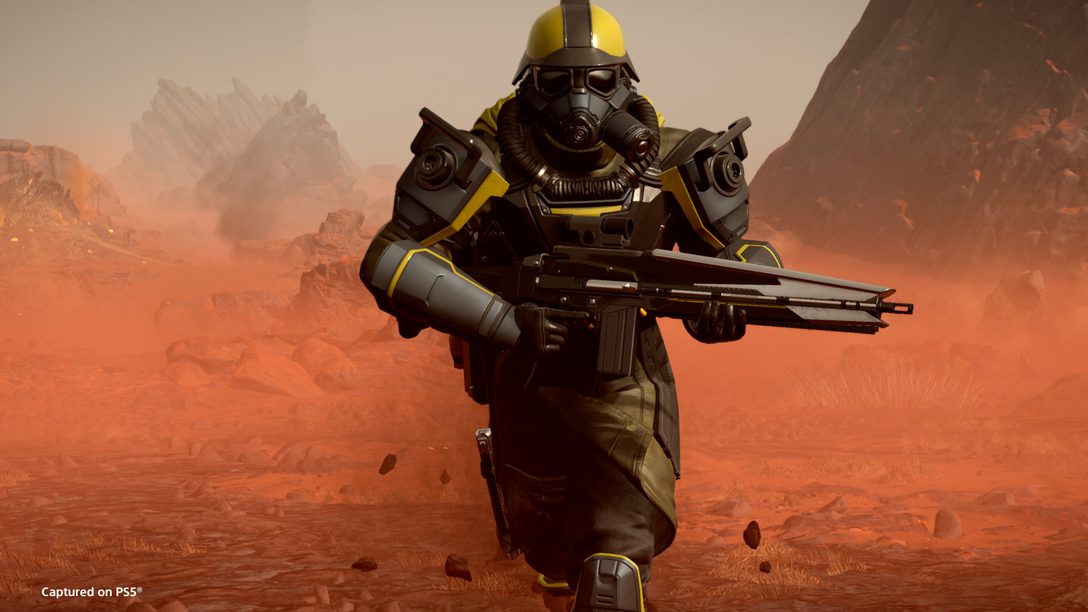
When we first heard about the opportunity to not only work with Wizards of the Coast but on the Dungeons & Dragons property itself, well let’s just say that the nerdgasm around the studio was at an all-time high. We went with action-RPG as the genre based off of studio competency, market trends and general interest (basically, we thought it was cool and knew we can do a good job of it.) We knew that this the best fit for our first D&D game.
We wanted to make the game as accessible as possible, just let players play, harkening back to the ‘old school’ days of gaming. You should be able to play alone, call a buddy over and play locally or jump online and find a party of adventurers to group with. There are definitely development issues with balancing and performance having a downloadable PSN game that is fully featured, but we felt strongly about the usability of the game. Besides, isn’t that what D&D is about – freedom of play?
It was also important to us that the player has a persistent character without restrictions that he or she can continually develop whether they were playing alone or with others. No playing as a “henchman” or sidekick; the XP you get is yours, the loot you grab you keep. Much like the pen-and-paper D&D game, your character is yours to do whatever you want with. We started going through all of the D&D materials we can get our hands on and we set up a few pen and paper campaigns in the studio. We looked at D&D’s current rule set as well as older ones and found that the 4th edition rules lends itself closer to video gaming than any other. We chose to use the 4th edition rules as a starting point for all of our systems. The first task was then to re-create the system digitally, and though it was a huge task it was not the biggest challenge we faced. The bigger challenge was to take the system and tune, tweak and re-design it to support an action-RPG title.
For the action component, the “moment-to-moment” gameplay, needed to be fun and and satisfying. We started at the root: one player, one enemy. First is making the hit and reaction, then make that feel satisfying. Then we boarded out with multiple ranges with multiple attack types (swords, arrows, spells). After that comes the real fun: hordes and multiplayer.
Character development lies at the core of the D&D experience, so we started laying out the 4th edition rules against the overall playtime we were going to have. Very early on, we decided to concentrate on the first 10 levels of the 30 level characters within the rule set. Pen-and-paper campaigns can take a long time to play through and even though “time” is accelerated in a video game, we need to have a good character development curve to pace out all the abilities and powers that a player would earn. This was by far the longest part of the gameplay development process – the balancing. These RPG systems all rely on the moment-to-moment action components to determine what the frequency of XP earning is through the DPS (damage per second) so that we can set a proper flow to the action/RPG experience.
The other big part of the role-playing experience is the narrative. The narrative is arguably the most important part of the pen-and-paper experience and it is equally important here. It is the context to your actions, the “why?” As with any great fantasy story, we needed a great villain. This antagonist needed to be hated by the player and motivate them to continue on, yet cool in his or ruthlessness. Someone you wanted to face and best. And thus, Rezlus, the High Cleric of the Zhentarim, was born. With Rezlus comes his… wait for it… evil plan to conquer the Dalelands and specifically Daggerdale. The history of Daggerdale and the Zhentarim black network was a perfect backdrop for the game. Rezlus’s plan plays on the events of Daggerdale’s bloody past that fans of D&D will surely recognize.
So we have fun and satisfying action, a deep robust role-playing system , and a good story. Now comes the hard part: making them work seamlessly together throughout the entire play experience!














Comments are closed.
31 Comments
Loading More Comments